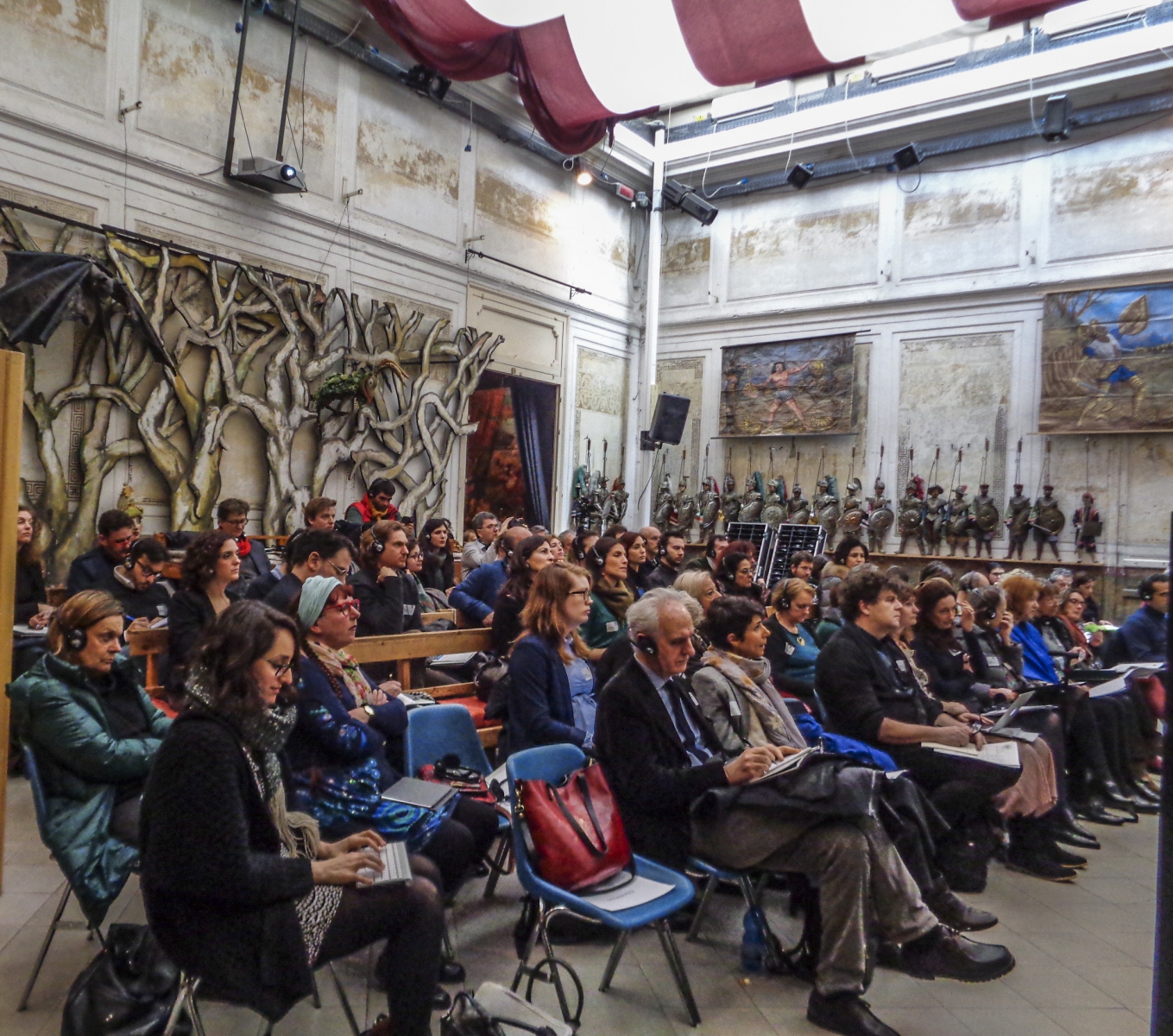Report of the Expert meeting on Intangible Cultural Heritage, Museums and Participation (28.02.2018, Palermo)
Welcome & position paper
Participants to the Expert meeting by welcomed by Alessandra Broccolini, who continued with a brief overview of five key messages that are formulated in the position paper 'Living museums for a living heritage', written by Valentina Lapiccirella Zingari, Rosario Perricone and Pietro Clemente:
- Some museums contribute, in close relation with communities/groups and individuals, to the transmission of a living cultural heritage
- Promote a new vision of the museum as a living tool to spread the ICH message
- Ensure the widest possible participation and active involvement of practitioners in all actions related to their heritage
- Build each museum on basic shared rights, responsibilities, respect, values, knowledge, skills, practice, and benefits.
- Museums should act as contact zones and connective tools to strengthen the projects of heritage communities, bringing their voices/actions in the public space as a process
Keynotes
Berardino Palumbo (University of Messina - IT) followed with a contribution titled 'The social production of (new) imagined communities: reflections from an anthropological-political perspective'. Palumbo discussed the linkages between nations, museums and heritage; focussing on the notion of public space, where time, subjects (individuals or collectives), social relations, ... come together. But Berardino raised the question of what is a public space? Is our conception of public space not universalised and based on western perceptions? Does public space even excist as a category? And can the same be said for the concept of 'community'?
Marc Jacobs (VUB, UNESCO chair on critical heritage studies and the safeguarding of the intangible cultural heritage and FARO. Flemish Interface for cultural heritage - BE) proceeded with a countrerpoint contribution: 'The productive imagination of (new) M&Ms and CGIs: the politics of augmented realities, embodiment and translations'. In his presentation, Jacobs:
- stresses the need to talk about 'communities, groups and individuals' and not only about communities, in the context of intangible cultural heritage
- introduces the idea that museums can be part of the 'heritage community' (cfr. the 2005 Faro Convention) that safeguards intangible cultural heritage
- refers to the actor-network theory when discussing safeguarding: make sure to let everyone speak and act (including museum items, people, ...)
- stresses that in safeguarding intangible cultural heritage, it might be the museums that participates (in stead of practitioners of ICH participating in museum practice)
- recalls the opportunities that the use of augmented reality can provide
Working groups
Participants to the Expert meeting were asked to create mindmaps about the safeguarding measures for intangible cultural heritage, namely "identification, documentation, research, preservation, protection, promotion, enhancement, transmission, particularly through formal and non-formal education and revitalization". These mindmaps shared the most important things a museum needs to do, know, be aware of, be inspired by, who they could consult, etc. to ensure they successfully work with practitioners of intangible heritage in the process of safeguarding this heritage. The results of this workshop will be processed and included in the IMP toolbox.
Museums cases on intangible cultural heritage and participation
In three rounds, museums from the five IMP partner countries were asked to present their inspiring cases on intangible cultural heritage, that focused on participation of communities, groups and individuals who embody, perform and transmit ICH.
|
Round 1
moderation by Alessandra Broccolini |
|
Round 2
moderation by Katia Ballacchino |
|
Round 3
moderation by Vita Santoro |
CASE: 'Local knowledge and intangible cultural heritage: microeconomics for small villages and inner areas'
Mathieu Champretavy (Maison Bruil - IT) and Tommaso Lussu (Casa Lussu - IT) proceeded to give a duo-presentation about the ways in which focussing on intangible cultural heritage can be a method for museums in small secluded regions, to help combat depopulation and help shape collective economic growth in these areas. View PPT
Concluding observations
Concluding observations were presented by Daniele Parbuono (Chongqing University of Arts and Sciences - CN and University of Perugia - IT) and Vito Lattanzi (Direzione generale Musei, Ministero dei Beni Culturali e del Turismo - IT).
Parbuono sketched how museums are evolving, since the 70s, from being centred on themselves and their collections, to centred more and more to communities and focussed on territorial aspects. He concludes with some intriguing open questions: What are museums? What are communities? And what is ICH against the backdrop of changing perspectives?
In his concluding remarks, Lattanzi raised the question: does intangible heritage need museums? Museums in any case do need intangible heritage, according to him: to get more familiar with the lives of people, because intangible heritage corresponds to their lives and their memories. Lattanzi sees larger challenges in respect to ICH, for big national museums - as opposed to local museums - with large collections, because they are pressured to widen their audiences. In either case, Lattanzi concluded, the concept of participation (and networking at the territorial level) is vital in the development of museums the coming century.
Click here to return to the report of the International conference on Intangible Cultural Heritage, Museums and Participation.
